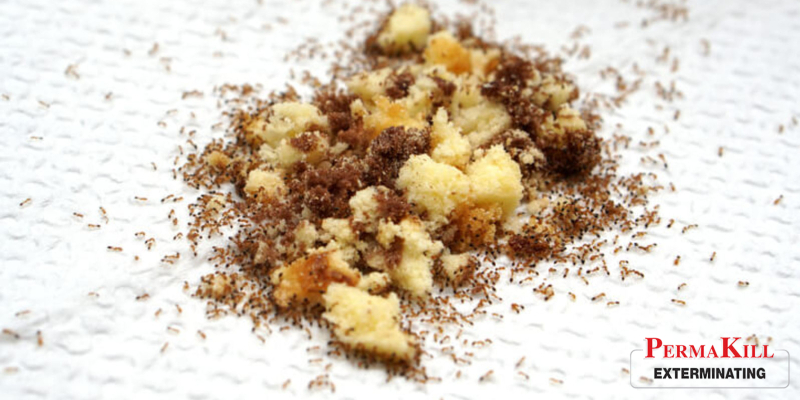


Keeping the house ant-free might be a difficult task because these tiny insects are persistent. They slip into the cracks along the walls if they find a stable food source in the kitchen. A small group of ants might not be such a huge deal, but the problem quickly escalates to a severe infestation if not treated immediately.
So how do homeowners know whether grease or sugar ants are in their homes? Grease ants and sugar ants are the two common ant species that infest homes. Although they’re both considered nuisance pests, their main difference from each other is their diet – sugar ants prefer sweet things while grease ants are fond of protein-rich food.
Ants are found almost everywhere. These pests survive even the harshest environments so it’s not surprising to find a few of them stealing food and crumbs in the kitchen. They’re also adaptive and persistent, which is why most pest management professionals agree that they’re getting harder to eliminate in a property every year.
According to the National Pest Management Association (NPMA), around 74% of homeowners lack general knowledge about ants and the threats they pose. Aside from being a nuisance, an ant infestation might also trigger allergic reactions or contaminate the food. To eliminate them and prevent further harm, it’s important to learn about the exact species of ant in the house first.
Grease ants and sugar ants are the most common species of ants to infest houses and other man-made structures. They require different pest control treatments, so it’s important to distinguish them from each other first. Here’s how to tell these pests apart:
There are thousands of ant species all over the world, but the pests that get inside homes for food and shelter are usually classified as either sugar or grease ants. One of the ways to identify the species of ants is through their appearance – size, colors, and wings if they have any.
Sugar ant is the common name of an ant species that are only found in Australia, the Camponotus consobrinus. For Americans, sugar ants refer to the group of several species of ants that invade home in search of sweet food. Here are other species of sugar ants that homeowners might find in their kitchen or other parts of their house:
On the other hand, grease ants (Solenopsis molesta) are much smaller than sugar ants. They only measure around 1/32 to 1/16 inch long. Their eyes are also a lot smaller in relation to their head. Their bodies are usually colored yellow or bronze to dark brown. Another noticeable characteristic of grease ants is their smooth and shiny bodies.
Sugar ants typically build their nests around trees, shrubs, and other vegetation. They’re also usually found in lumber or woodpiles. These pests get inside homes through the cracks and crevices, so make sure to seal these holes with cement or caulk. If the crack is too large for caulk, use spray foam instead.
Grease ants prefer building nests near other ant colonies. They’re also called thief ants because of their habit of stealing food or larvae from other ants. A grease ant colony is smaller in size compared to other ant colonies because of its thieving habit. Their nests often have tunnels that are connected to other nests to make stealing resources easier.
These thief ants build their nests under rocks and building foundations. Some of them also create nests in decaying wood or bare soil. They start infesting homes during mid-summer and build ant nests in wall cracks. They also build nests behind baseboards, in cupboards, and beneath floors.
Their food preference is the biggest difference between these two kinds of ants. Although both of them consume anything available to them, sugar ants eat sweets while grease ants prefer food that’s rich in protein. Grease ants are usually fond of vegetable oil, meats, and cheese. They also consume dead insects if they’re available.
Find out which kind of ant is in the house by conducting a test. Place a tablespoon of honey and another tablespoon of peanut butter in the area where the trail of ants is. If the ants prefer the honey, then you’re dealing with sugar ants. If the ants flock over the tablespoon with butter, then the culprit is grease ants.
Both sugar ants and grease ants are considered nuisance pests in a home. However, severe infestations usually lead to home damage and some health risks. Since they have a habit of creating nests inside walls and beneath the house, these ants weaken the foundation of the building.
Ant bites only lead to mild pain and discomfort most of the time, but the skin might become irritated too. Some of them even trigger allergic reactions that make it difficult for some people to breathe. Ants also contaminate the food they take from.
Another danger that ants bring to a home is attracting other pests. Ants are prey to bigger pests, such as spiders. Their presence only makes it appealing for the spiders to start camping in the house.
After finding out the species of the ant in the house, it’s time to eliminate them using the right pest control method. Although they were found inside the house, grease and sugar ants might build their nest in obscure places inside or outside the property. Learning the location of their nests is also essential to determine the best pest control method to use.
The most effective pest control for the ants indoor is baiting. The choice of food bait depends on the kind of ants in the house, but they’re usually mixed with boric acid. Peanut butter or vegetable oil is the best food bait for grease ants, while honey or jam works best for attracting sugar ants.
Boric acid has low toxicity levels for pets and humans, but it’s extremely effective for killing ants. After mixing the boric acid with the right food bait, place the mixture into wax paper and secure it in place using masking tape. Ensure that the ant bait is placed along the pathway of the ants.
The best way to treat the ant infestation outside is to find their nest first and treat it directly. Locate their nest by following a trail of ants returning to their nest. Upon reaching the ant nest or mound, apply the ant spray directly to it.
Preventing a handful of ants from entering the house might seem impossible, but it’s the first and most important step to prevent a large-scale infestation. If the ants are still persistent despite your efforts to keep them out, then it’s time to call a pest management professional.
PermaKill Exterminating is a trusted pest control service provider in New Jersey. Our skilled technicians are equipped with the latest tools and techniques to get rid of ants and prevent them from returning. Call us at (973) 584 – 6414 for a free estimate.
Learn more: How to Get Rid of the Grease Ants in the Kitchen